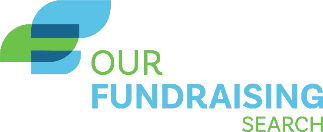Nonprofits nationwide are grasping with daily unknown economic shifts. And while some sectors have been impacted more deeply than others, all are, or will be, feeling the effects. Understandably, we are being approached regularly by clients and friends for guidance on how to navigate the uncertainty that the nonprofit community is facing (you may be interested in also checking out our recent article “Navigating Change, Uncertainty and Upheaval“). In fact, over the course of the next two weeks, our team will be speaking at three different conferences on this exact topic.
No matter your organization’s current financial status, we advise you to be diligent in planning for the potential impact of financial upheaval on fundraising.
The Impact of Inflation on Fundraising
Let’s start with the impact of inflation. CPI-U, which is the Consumer Price Index for Urban areas, rose 2.8% in the last 12 months, and is currently forecast to rise 2.9% in the next 12 months. Note, for some nonprofit sectors, inflation was higher. For example, medical costs increased by 3.0% in the same period.
The current forecast for inflation for the next 3 years are 3.0%. If we continue to use nonprofit healthcare as an example, because medical costs have outpaced CPI-U by ~0.2%, we believe that clinics should plan that costs will increase by 3.2% per year for the next 3 years. That means, revenue production, both earned and contributed revenue, must increase by a minimum of 3.2% each year just to maintain status quo.
The Impact of Market Uncertainty on Fundraising
Giving USA data, going back to 1983, shows that philanthropy in the United States mirrors the performance of the Standard & Poor’s 500 Index. Since the end of January 2025, the S&P 500 has declined by roughly 19 percent (as of publication 4.28.25). This is a significant drop, especially considering that the market had been in a rally since the 2024 election. The NASDAQ Composite and the Dow have also seen considerable losses, with the NASDAQ down 23% and the Dow down 13%.
This impacts both individual and institutional funders. Drops in the S&P 500 can have almost immediate impacts on individual funders, while the impact to institutional funders may take as long as 12 months to be reflected. Recovery can take as long as 14 months, once the markets stabilize and consumer confidence returns.
The Impact of Government Cuts to Grant Programs on Fundraising
The combination of (1) inflation; (2) market uncertainty; and (3) significant, drastic cuts to grants and public welfare programs are of particular concern to institutional funders. In the past, if you were able to secure federal grants, you could believe you had some level of stability to your fundraising. Not anymore. As those grants are slashed, those nonprofits aren’t going to “go away.” Rather, they are going to turn to other funding sources, in particular, institutional donors.
Major foundations are already seeing the uptick in inquiries. Our conversations with major foundations during the first quarter have revealed the following.
- Many foundations are considering increasing their “sit out” periods to accommodate more applicants.
- Because market instability impacts their funds as well, several are also considering moving to “invitation only” applications.
- We expect coalition grants and nonprofit consolidation funding requests to take priority.
Our Recommendations
- This is not the time for optimism. The impact of financial chaos in the country is just beginning. Smart nonprofits are going to organize themselves with the expectation that this is going to take some time to recover from. Our current guidance is to prepare for at least three years of financial uncertainty.
- Do not set or agree to stretch goals. Your fundraising teams are going to be working hard just to keep up with inflation. Your fundraising goals for the next 3 years must grow by a minimum of 3% annually just to keep up with inflation; more in some sectors.
- Our recommendations become much more complex when we look at capital campaigns.
- If your capital campaign is underway, especially if you are in the public phase, keep going. But do not expect to exceed your goal. That means you absolutely cannot accept cost overages or scope creep in your project.
- If you are contemplating a campaign, this is the best time to do a feasibility study. Donors are going to be extremely cautious and so you will get the most conservative picture of what the campaign can raise. DO NOT start a campaign without a feasibility study.
- For campaigns that are starting or in the silent phase: if your feasibility study was completed before January 2025, assume your target is overstated by between 10% and 20%.
We also recommend that nonprofits do the following:
- Consider consolidations. There are over 1.8 million nonprofits in the United States, approximately 1.5 million of which are 501(c)(3) charities. That’s basically one nonprofit for every 230 Americans. Foundations have been encouraging nonprofits to consolidate for years; and most nonprofits have ignored them. Expect the messaging to become a lot more strident.
- Diversify and professionalize your fundraising. Galas and golf tournaments are not going to fix this. If you are an organization trying to get by without professional fundraising support, you are already in danger.
- Do not discount Millennials and Gen Zers. We’ve been preaching this for years. Personal preferences like brand loyalty, entertainment, taste and philanthropy are formed between the ages of 16 and 26. Five years ago, I started encouraging nonprofits to target Millennials. Many did not because they felt Millennials did not have the income to support them. The average Millennial household income in 2020 was $71,566. It’s now $97,860. That’s a 37% jump, or a 7.4% compound annual growth rate (CAGR). Did your fundraising have a similar CAGR growth over the same period? The current Gen Z household has an average income of $45,000. If they experience similar growth rates that Millennials did, in 5 years that house old income be $64,000 in present value.
Closing Thoughts
These are serious times. We do not expect every nonprofit to survive. At Our Fundraising Search, we are here to help. Help, however, requires a realistic perspective on the current landscape, confident action, and a serious approach to fundraising.
You may also be interested in OFS’ recent article: Navigating Change, Uncertainty and Upheaval






Leave A Comment